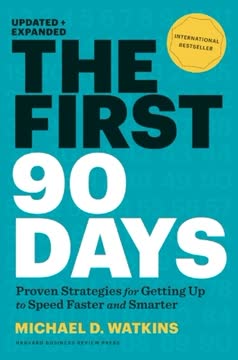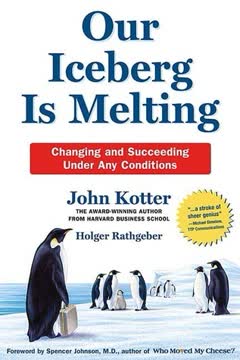Key Takeaways
1. Ethical leadership is about casting light, not shadows
We know where light is coming from by looking at the shadows.
Illuminating vs. darkening. Ethical leaders have the power to brighten or darken the lives of followers through their actions and decisions. By recognizing common leadership shadows like abuse of power, misuse of privilege, information mismanagement, and inconsistency, leaders can take steps to instead cast light through ethical conduct. This requires ongoing self-reflection and a commitment to moral development.
Toxic leadership impacts. Bad or toxic leaders engage in destructive behaviors that harm followers and organizations. Types include:
- Incompetent - lacking ability to lead effectively
- Rigid - unyielding and unable to adapt
- Callous - uncaring and dismissive of others' needs
- Corrupt - lying, cheating, stealing for personal gain
- Evil - inflicting severe harm on others
Destructive leadership is common and has significant negative effects on employee well-being, job satisfaction, and organizational performance. Recognizing these patterns is the first step in promoting ethical leadership.
2. Leaders face unique ethical burdens and challenges
Ethics is at the heart of leadership.
Power and responsibility. Leaders have greater access to resources, information and decision-making authority, which creates unique ethical obligations. They must carefully consider how to use their power, what information to share or withhold, and how their choices impact various stakeholders. Ethical dilemmas often involve balancing competing priorities and values.
Key ethical challenges for leaders:
- Managing power dynamics
- Distributing resources and opportunities fairly
- Communicating transparently vs. maintaining confidentiality
- Balancing organizational goals with social responsibility
- Modeling ethical conduct consistently
- Addressing ethical lapses in the organization
Leaders must develop ethical expertise to navigate these complex issues. This involves cultivating moral awareness, judgment, motivation and character. By embracing their ethical responsibilities, leaders can have a profound positive impact.
3. Character development is crucial for ethical leadership
Leadership is the exercise of influence in a group context.
Virtues and moral identity. Developing ethical character involves cultivating virtues like courage, wisdom, justice, temperance, integrity and compassion. Leaders should strive to embed these qualities into their self-concept and behavior - forming a strong moral identity. This provides an internal compass for ethical conduct.
Approaches to character building:
- Finding ethical role models
- Reflecting on formative experiences and hardships
- Developing good habits and practices
- Clarifying personal values and mission
- Engaging in service and prosocial activities
- Studying moral philosophy and ethics
Character development is a lifelong journey. Leaders should view ethical growth as an integral part of their overall leadership development. With consistent effort, leaders can strengthen their moral foundation and expand their capacity for ethical leadership.
4. Combating evil requires understanding and forgiveness
The line between good and evil lies in the center of every human heart.
Faces of evil. Evil manifests in various forms, including as dreadful pleasure, exclusion of others, deception, bureaucratic systems, individual choices, and ordinary situations. Understanding these dynamics helps leaders recognize and resist evil influences. No one is immune from the capacity for wrongdoing.
Power of forgiveness. Forgiveness is a potent tool for breaking cycles of evil and promoting healing. It involves:
- Acknowledging the harm done
- Choosing to abandon resentment
- Developing empathy for offenders
- Absorbing pain rather than retaliating
- Offering undeserved compassion
While challenging, forgiveness benefits both victims and offenders. It reduces anxiety, improves well-being, and opens the door to reconciliation. Leaders can model forgiveness in their own conduct and create systems that support restorative approaches to conflict.
5. Ethical decision-making integrates reason and emotion
If it ain't got emotion, it ain't got moral swing.
Dual process model. Ethical choices involve both intuitive, emotional responses and conscious reasoning. Emotions like empathy, disgust, and guilt provide important moral cues. Reason allows us to analyze complex situations and overcome biases. Effective decision-making leverages both systems.
Key components of moral action:
- Moral sensitivity - recognizing ethical issues
- Moral judgment - determining right course of action
- Moral motivation - prioritizing ethical values
- Moral character - persisting in ethical conduct
Leaders should cultivate all four components to enhance their ethical effectiveness. This involves developing emotional intelligence, studying ethical frameworks, clarifying personal values, and building moral habits. With practice, leaders can make wiser choices more consistently.
6. Multiple ethical frameworks provide guidance for leaders
We need to recognize that certain values are widely shared.
Ethical perspectives. Various philosophical approaches offer valuable insights for moral reasoning:
- Utilitarianism - maximizing good consequences
- Kantian deontology - following moral duties and rules
- Justice as fairness - ensuring equitable treatment
- Virtue ethics - cultivating moral character
- Care ethics - prioritizing relationships and compassion
- Pragmatism - using inquiry to solve ethical problems
No single framework is sufficient for all situations. Leaders benefit from understanding multiple perspectives and applying them flexibly based on the specific ethical dilemma at hand.
Applying frameworks. When facing an ethical issue:
- Clearly define the problem
- Gather relevant information
- Consider which ethical principles apply
- Identify and evaluate options
- Make a decision and follow through
- Reflect on outcomes and lessons learned
Regular practice with ethical frameworks builds moral reasoning skills over time.
7. Developing moral potency bridges judgment and action
As we practice resolving dilemmas, we find ethics to be less a goal than a pathway, less a destination than a trip, less an inoculation than a process.
Moral potency components:
- Moral ownership - taking responsibility for ethical conduct
- Moral efficacy - confidence in ability to act ethically
- Moral courage - willingness to persevere despite challenges
Leaders must cultivate all three elements to consistently translate ethical judgments into moral action. This involves clarifying ethical responsibilities, building ethical skills through practice, and developing the fortitude to stand up for one's principles.
Overcoming obstacles. Common barriers to ethical follow-through include:
- Self-interest and hypocrisy
- Misaligned reward systems
- Lack of ethical competence
- Situational pressures
- Diffusion of responsibility
By anticipating these pitfalls, leaders can proactively address them. Creating accountability systems, aligning incentives with ethics, and fostering a speak-up culture all help bridge the judgment-action gap.
8. Ethical climates and systems reinforce moral behavior
Leaders are truly effective only when they are motivated by a concern for others.
Shaping ethical contexts. Leaders play a crucial role in creating organizational cultures and systems that support ethical conduct. This involves:
- Articulating clear ethical standards and expectations
- Modeling ethical behavior consistently
- Implementing ethics training and education programs
- Establishing reporting mechanisms and protections
- Recognizing and rewarding ethical conduct
- Addressing ethical lapses fairly and consistently
A strong ethical climate reduces pressures for unethical behavior and empowers employees to voice concerns.
Systemic approach. Ethical leadership extends beyond individual conduct to shaping policies, practices and structures that promote ethics, including:
- Governance and oversight mechanisms
- Risk management processes
- Performance management systems
- Stakeholder engagement practices
- Corporate social responsibility initiatives
By taking a holistic approach, leaders can create environments where ethical behavior becomes the norm rather than the exception.
Last updated:
FAQ
What's Meeting the Ethical Challenges of Leadership about?
- Focus on Ethical Leadership: The book explores the ethical dimensions of leadership, using the metaphor of light and shadow to illustrate how leaders can illuminate or obscure ethical paths.
- Four-Part Structure: It is divided into four main parts: the shadow side of leadership, looking inward at the leader's character, ethical standards and strategies, and shaping ethical contexts within organizations.
- Practical Applications: Includes case studies, self-assessments, and examples from various fields to help readers apply ethical principles in real-world situations.
Why should I read Meeting the Ethical Challenges of Leadership?
- Growing Interest in Ethics: Addresses the increasing demand for ethical leadership in various sectors, providing insights into navigating moral dilemmas effectively.
- Multidisciplinary Approach: Draws from philosophy, psychology, sociology, and business ethics, offering a comprehensive view of leadership ethics.
- Practical Tools: Offers self-assessments and strategies for ethical decision-making, enhancing leadership skills and moral competence.
What are the key takeaways of Meeting the Ethical Challenges of Leadership?
- Understanding Shadows: Leaders must recognize the "shadows" they cast, such as abuse of power, which can lead to unethical behavior.
- Character Development: Emphasizes developing virtues like courage, integrity, and compassion to foster ethical leadership.
- Ethical Decision-Making Frameworks: Provides models like Kidder’s Ethical Checkpoints and Nash’s 12 Questions to guide leaders in complex moral dilemmas.
What are the best quotes from Meeting the Ethical Challenges of Leadership and what do they mean?
- Self-Responsibility: "A leader must take special responsibility for what’s going on inside his or her own self," highlighting the importance of self-awareness.
- Ethics at the Core: "Ethics is at the heart of leadership," emphasizing that ethical considerations are fundamental to effective leadership.
- Military Imagery: "Leaders often use military images when carrying out their tasks," suggesting that a collaborative approach may yield better outcomes than a combative one.
How does [Author] define ethical leadership in Meeting the Ethical Challenges of Leadership?
- Moral Behavior: Characterized by actions that align with moral principles and values, demonstrating integrity and fairness.
- Influence on Others: Ethical leaders shape the ethical behavior of their followers, serving as role models.
- Community Responsibility: Extends beyond individual organizations to include a commitment to the broader community.
What is the framework for ethical crisis management presented in Meeting the Ethical Challenges of Leadership?
- Three Stages of Crisis: Precrisis, crisis event, and postcrisis, each requiring different leadership actions.
- Key Tasks in Each Stage: Precrisis involves risk identification and planning; crisis event focuses on communication and decision-making; postcrisis emphasizes healing and learning.
- Competencies for Leaders: Includes moral responsibility, transparency, and resilience to navigate crises while upholding ethical standards.
What are the shadows of leadership discussed in Meeting the Ethical Challenges of Leadership?
- Shadow of Power: Refers to the potential misuse of authority, leading to unethical decisions.
- Shadow of Privilege: Leaders may become disconnected from followers' realities, resulting in a lack of empathy.
- Shadow of Mismanaged Information: Poor communication can lead to crises and ethical failures, highlighting the need for transparency.
How does [Author] address the concept of moral imagination in Meeting the Ethical Challenges of Leadership?
- Envisioning Ethical Implications: Allows leaders to foresee the potential consequences of their decisions on stakeholders.
- Encouraging Empathy: Enhances understanding of others' perspectives, fostering ethical and compassionate leadership.
- Creative Problem-Solving: Empowers leaders to find solutions that align with values and stakeholder expectations.
What ethical frameworks are discussed in Meeting the Ethical Challenges of Leadership?
- Utilitarianism: Focuses on actions that produce the greatest good for the greatest number.
- Kant’s Categorical Imperative: Emphasizes duty and moral principles, guided by universal moral laws.
- Justice as Fairness: Advocates for equal rights and opportunities, emphasizing benefits for the least advantaged.
How can leaders effectively shape ethical contexts within their organizations according to Meeting the Ethical Challenges of Leadership?
- Establish Clear Values: Define and communicate core values to guide decision-making and behavior.
- Promote Ethical Training: Provide training on ethical decision-making to enhance employees' ethical competence.
- Encourage Open Dialogue: Create an environment where employees feel safe to discuss ethical concerns.
What role does emotional intelligence play in ethical leadership as per Meeting the Ethical Challenges of Leadership?
- Definition of Emotional Intelligence: Involves recognizing and managing emotions, crucial for effective leadership.
- Impact on Group Dynamics: Fosters a positive emotional climate, enhancing communication and collaboration.
- Conflict Management: Emotionally intelligent leaders handle conflicts constructively, promoting ethical decision-making.
How does [Author] address the concept of groupthink in Meeting the Ethical Challenges of Leadership?
- Definition of Groupthink: Occurs when a group prioritizes consensus over critical thinking, leading to poor decisions.
- Symptoms of Groupthink: Includes an illusion of invulnerability and pressure on dissenters, hindering effective functioning.
- Preventive Strategies: Encourage dissent, bring in outside perspectives, and establish ground rules for discussion.
Review Summary
"Meeting the Ethical Challenges of Leadership" receives mixed reviews, with an average rating of 3.62/5. Many readers find it informative and well-organized, praising its comprehensive coverage of leadership ethics and practical applications. The book's use of case studies and self-assessments is appreciated. Some criticize its dense academic style and potential bias. Several reviewers note its value as a textbook for leadership and ethics courses, while others find it thought-provoking and useful for personal development. The light/shadow metaphor is frequently mentioned, though some feel it's overused.
Similar Books









Download PDF
Download EPUB
.epub digital book format is ideal for reading ebooks on phones, tablets, and e-readers.




